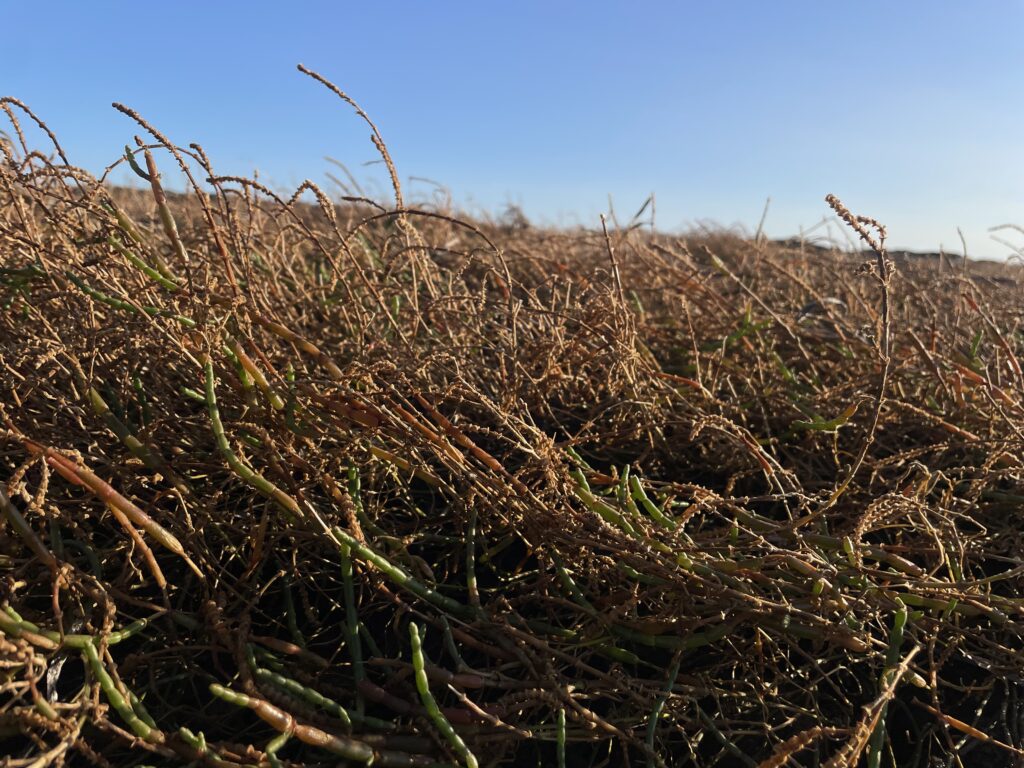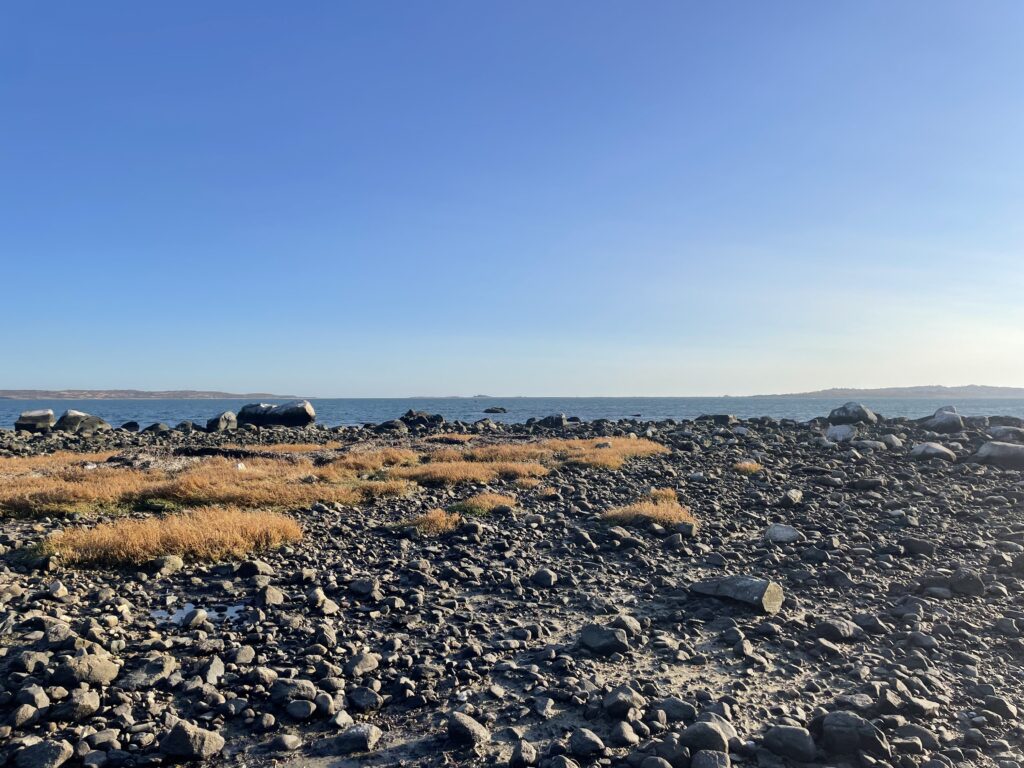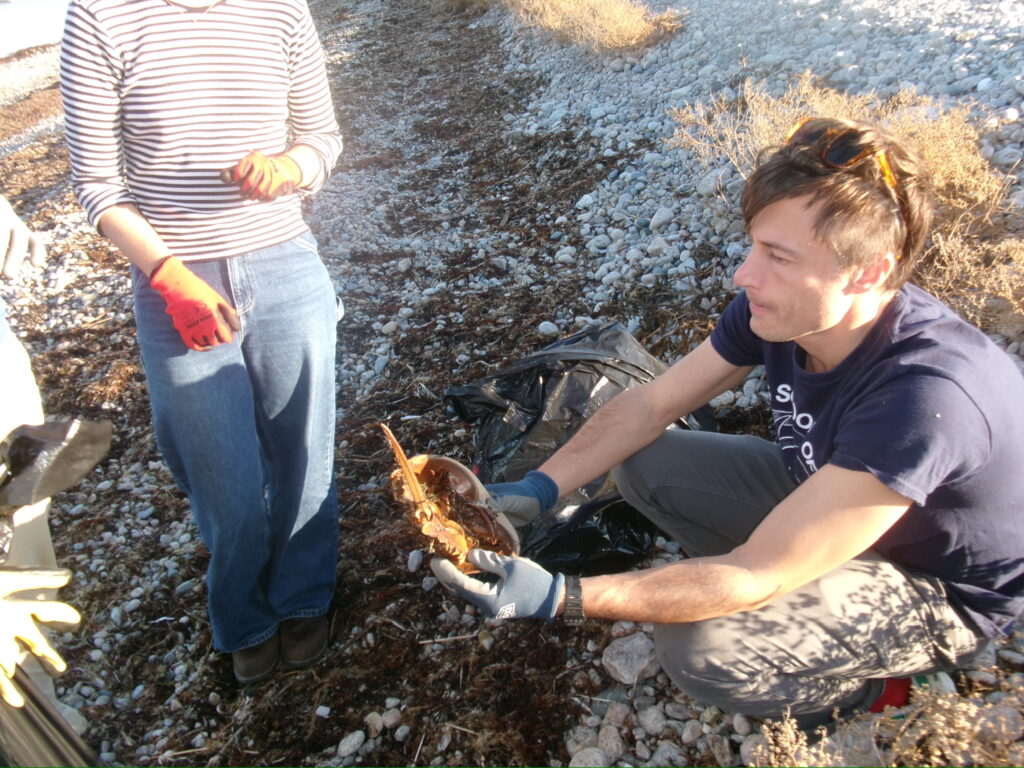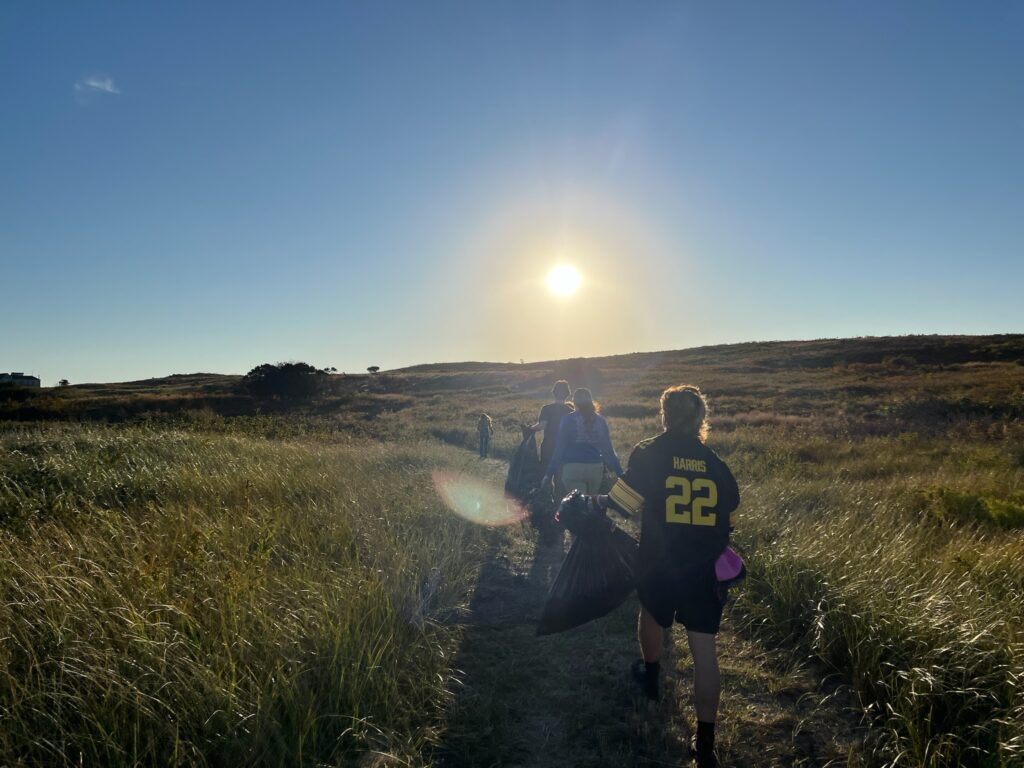Scientific Exploration of Penikese Island
Our reflections on our time spent on Penikese would be incomplete without examining our developing relationships with the island’s ecological and environmental systems. These relationships appeared in almost every activity, including labor, seminars, and leisure. Within this section, we consider some of the elements of our time on Penikese through a scientific lens, thinking about how we interact with our environment and how this fuels our desire to know and understand it through science.
Sea Pickles (Salicornia)
“I’m told that there are some sea pickles down by the water that are ready to be harvested. Would you guys be interested in helping me with that?” Ana asks the gardening crew as we stand in the shade on a break. I’m instantly intrigued–what is a sea pickle?–so we say yes, finish gardening, and follow her down to the beach. The walk along the rocky coast takes time, and we walk slowly, balancing step after step on the unsteady surface. We round one point and then the next with no luck, the promise of sea pickles diminishing by the minute. Finally, we round the corner, and Ana exclaims, “There they are!”
At first, I’m not sure where to look. But soon, I come face-to-face with unassuming ochre-colored patches growing among the rocks and sand and silt. Upon closer inspection, I find thick segmented stems, some green and some red, no longer than my little finger. I examine the plants, feeling almost as if they are also examining me. These are sea pickles, I’m told. Ana snaps a stem off and hands it to me as she pops a piece of stem into her mouth. “You can eat them,” she tells me. “The younger, green stems are the best.” I’m hesitant but follow suit, and I find that the sea pickle tastes like drops of pure salt. Questions flood my mind–what is a sea pickle, exactly? How do they grow in such high-salt environments? What sort of role do they play within the larger ecosystem? Who first learned that you could eat them?
I tuck the questions away in my mind just as I tuck a handful of green sea pickles in my pocket to bring back for dinner–apparently, sea pickles make a great salad topping. As I look out across the water and find the house staring back at me from the other side of the island, I think about the long walk across the rocks. I think about the anticipation of finding the sea pickles, the journey to see them, and the coming to know them by eating them, and my curiosity grows.
As it turns out, sea pickles are known under a variety of names. Sea pickles, pickleweed, swampfire, and glasswort refer to several plants of the genus Salicornia. This genus of succulent is halophytic, meaning it is generally tolerant of high salt concentrations and grows in areas with high salinity, like salt marshes and beaches (Nature Collective, 2024). These succulent plants have thick tube-like stems that store water, allowing the plant to survive in harsh conditions; more specifically, sea pickles have the ability to remove the salt from the saltwater they take up and store it in vacuoles within the ends of each stem (Nature Collective, 2024); this gives these plants the ability to remove excess salt, which can be toxic.
– Maddie
Seal Flippers
At some point during the coastal cleanup along the isthmus, I pick up a piece of something that looks like rubber or plastic, twisted into an unidentifiable shape by the sun. Undecided over whether or not to put it in my trash bag, I carry it for a while until I catch up with Justin and ask him what he thinks it is–to which he affirms that it is likely a piece of dried skin of an animal, perhaps from a rabbit. Somewhat startled, I leave the skin where I found it.
Sometime later, Justin spots something similar among the rocks: a dried part of what once was a seal. With heightened curiosity, the clean-up crew gathers to stand over the seal’s skin for a while, trying to piece together what it once might have been and what part of the seal’s body it had come from. Then, we locate what seems to be a flipper. After so much time in the sun, the dried skin has peeled back to reveal the bones underneath–five bony digits, starkly reminiscent of the five sets of bones we have in our own human hands. With excitement, we discuss the flippers and their digits, connecting our own observations with those of Louis Agassiz–particularly his belief that “useless” organs are evidence of a “divine plan” (Agassiz, 1859). Meanwhile, I look down at my own hand, imagining the bones beneath my skin.
Coming across this seal skin is a lesson in more ways than one. It not only helps me gain a better grasp of some of our earlier discussions from seminar, but I find that my mind begins to wander to homology and evolution. Witnessing this part of a seal–somewhat grim but somewhat fascinating–I find myself moved by the bones that we share. Standing by the water, observing an aspect of pinniped physiology, I can’t help but draw a clear connection between myself, the seal, and our last common ancestor.
– Maddie
Works Cited
Agassiz, L. (1859). Chapter First. In An Essay on Classification (pp. 1-14). London: Longman, Brown, Green, Longmans & Roberts, & Trubner & Co.
Nature Collective. (2024, September 17). Pickleweed. https://naturecollective.org/plant-guide/details/pickleweed/



